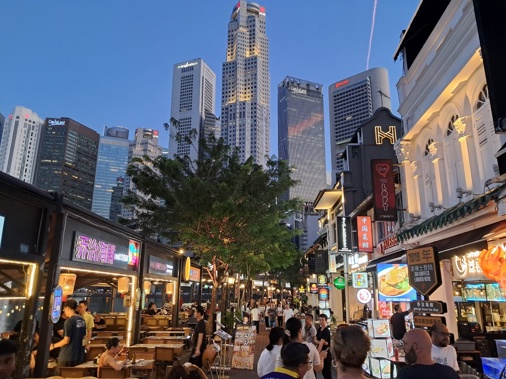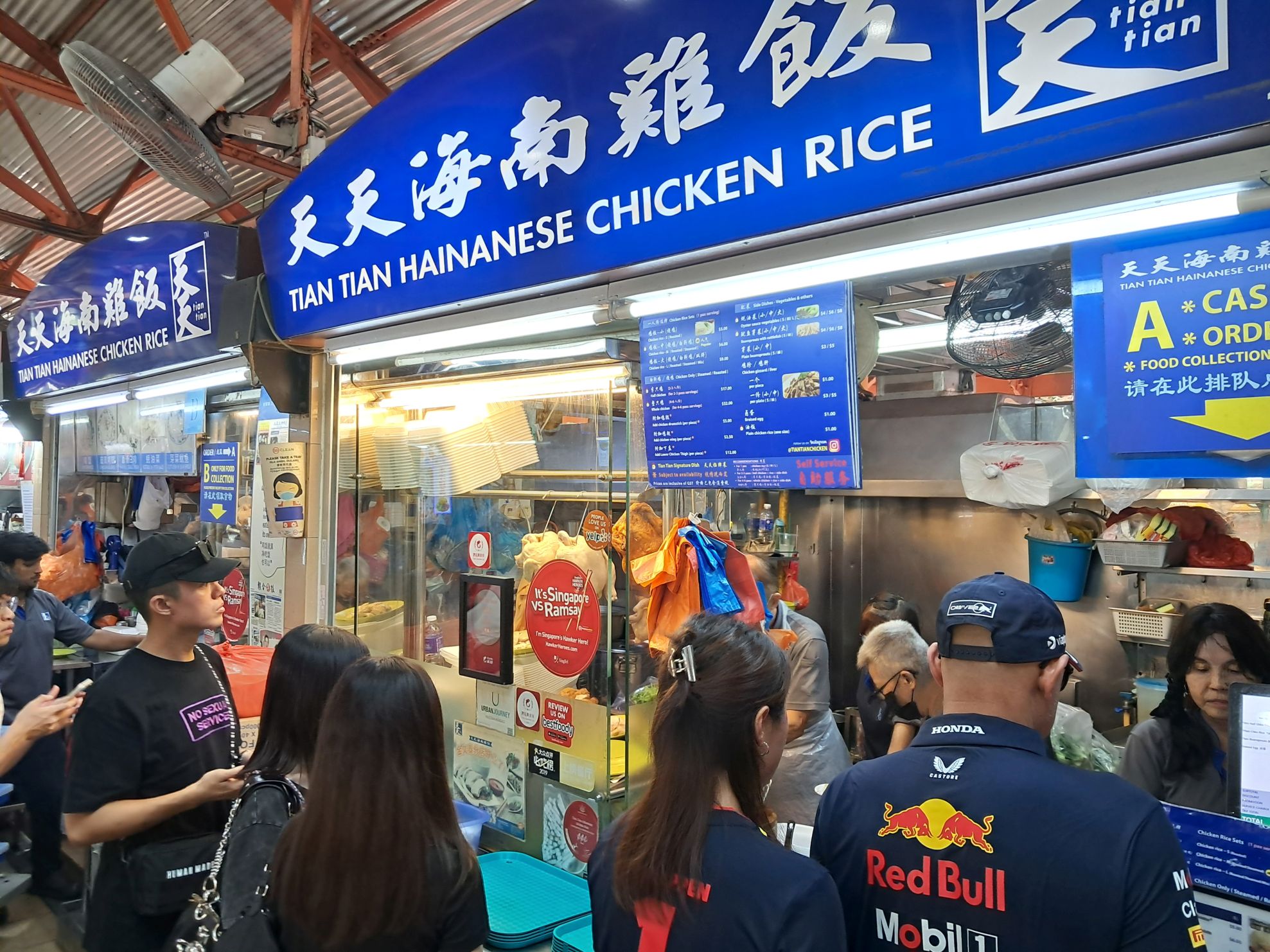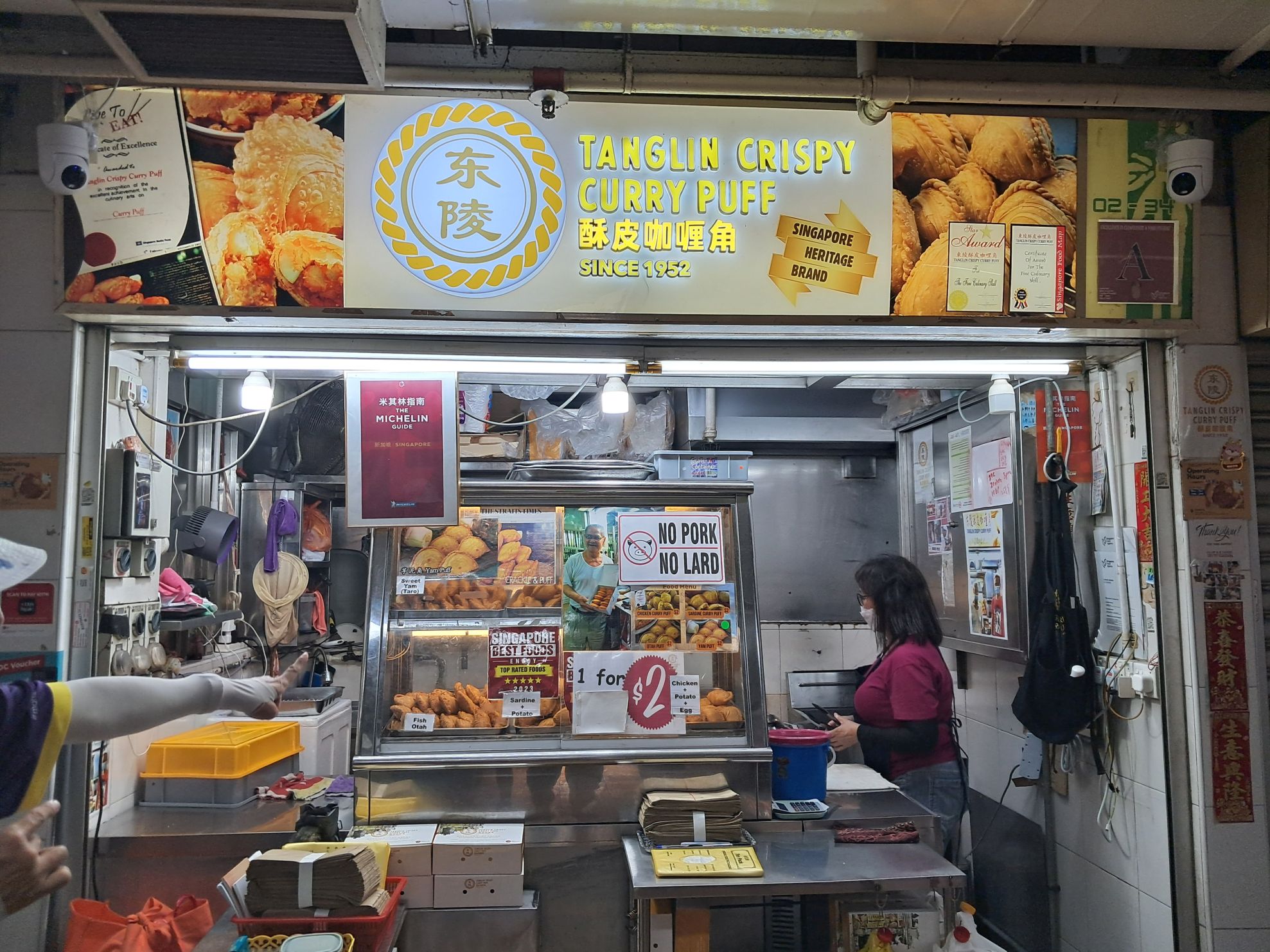
Singapore is so much more than just a steamy stopover between flights. It’s a sparkling melting pot of Southeast Asian culture, brimming with an ever-expanding arsenal of headline experiences. But alongside ticking off the likes of Gardens by the Bay and Marina Bay Sands, the Lion City’s biggest roar is reserved for the sizzling street food scene spilling forth in the hawker centre. Singapore’s harmonious multiculturalism and all its culinary influences positively sing on the plate. Come nightfall, Lau Pa Sat in downtown Singapore transforms into Satay Street, where a riot of meat on skewers and peanut sauce hold court.
In the interests of food hygiene, the vast majority street food stalls were kicked off the kerbside and directed indoors in the 1970s, giving birth to Singapore’s legendary hawker stall culture. At last count there’s now 110 hawker centres, of various sizes, pepper-potting Singapore. And they maintain a rigorous cleaning culture, where each centre closes down every three months for a 48-hour deep clean.
 Hawker Food culture in Singapore. Photo / Supplied
Hawker Food culture in Singapore. Photo / Supplied
Singapore is also famous for being one of the few countries in the world to have its street food featured in the annually released Michelin Guide. Michelin stars generally aren’t awarded to the hawker stalls because it’s deemed unfair to the pricier restaurant scene given their higher operating costs. However Michelin inspectors consider the hawker cuisine so good, they award stand-out vendors with a Michelin Guide recommendation or Bib Gourmand award, which recognises high-quality, low-price food. So if you want to eat your way through Singapore, what are the must-try signature dishes and where should you head?
Unofficially regarded as Singapore’s national food, Hainanese Chicken Rice is a dish of sliced tender chicken served with fragrant rice, ginger paste and a spicy chilli sauce. Adapted from the early Chinese immigrants from Hainan Island, it’s the spices and sauces used, which give the dish a unique, lingering, and lip-smacking taste. Maxwell Food Centre in Chinatown is home to a Michelin Bib Gourmand recipient for its Hainanese Chicken Rice - the Tian Tian hawker stall. They serve their main dish with a side of vegetables in oyster sauce. Superb!
 Tian Tian Hainanese Chicken Rice. Photo / Mike Yardley
Tian Tian Hainanese Chicken Rice. Photo / Mike Yardley
Char Kway Teow, which translates to ‘fried flat rice noodles’, is one of the most celebrated street foods in Singapore. It is a noodle dish made with variations of shrimps, eggs, Chinese sausage, pork lard, cockles, bean sprouts, and chives - all fried and dipped in soy sauce. The heart of this dish is lard which makes it super delicious. It is often served on a banana leaf to enhance the fragrance with a wedge of lime squeezed on the top. The Hong Lim Complex in Outram Park is one of the best places to sample this dish, because the Char Kway Teow hawker stall also proudly sports a Michelin Bib Gourmand. Queues can be formidable, but it’s worth the wait.
Native to the local cuisine, Singaporean Chilli Crab is a stir-fried crustacean dish prepared with sweet and spicy tomato sauces, mostly served with deep-fried steam buns called Mantou. Part of the primal joy of tucking into a heaping platter of chilli crab is just how messy it is to eat. Some vendors even provide plastic gloves for an easier cleanup. This Singapore staple is a must-try for seafood enthusiasts.
A must-try traditional Peranakan dish, also synonymous with Malaysia, is Laksa – a sweet and spicy soup of rice vermicelli noodles, cooked in a creamy sauce made from coconut milk and curry-based broth. Its spice comes from other ingredients including turmeric, coriander, and galangal. It is usually served with bean curd puff, cockles, fish cakes, or bean sprouts. When it comes to global comfort foods, a lusciously creamy bowl of noodles has to rank right near the top.
Sambal Stingray is another street food classic. Sambal is a special sauce made from chilli peppers, shrimp, fish sauce, shallot, sugar, vinegar and ginger. Combined with the soft, delicate and distinctive stingray meat, the palate is exquisite. This dish tastes best barbequed, wrapped in banana leaves. Malay culture conceived this popular street food of Singapore after discovering what a winning pairing that Sambal on top of Stingray is.
Literally meaning 'Meat bone tea', Bak Kut Teh is like a cherished all-day breakfast in Singapore. This local dish is a pork rib soup, in a broth of herbs and spices. Comprising of pork, offal, mushroom, choy sum, tofu and puffs, the soup is spiced up with cinnamon, cloves, garlic, fennel and star anise. This dish is relished with tea in the belief that tea will help saturate a large amount of fat in the soup. I’ve just tried Bak Hut Teh for the first time and I’m sold! The peppery, pork rib broth simmers for hours, developing a profound depth of flavour in the process and the meat is so tender. The dish has its roots in Singapore’s Teochew community, a group that immigrated from southern China. Ng Ah Sio Pork Ribs Soup Eating House, just off Clarke Quay, has been a Singapore go-to for half a century.
A cheap and cheerful breakfast staple is Kaya Toast. The toast is coated in this lusciously sweet jam, made with coconut, sugar, and eggs. The mixture is cooked down until thick, rich, and lightly caramelised. Pandan leaves are what give this spread both its fragrance and distinctive green colour. To the uninitiated, pandan smells vaguely reminiscent of vanilla mixed with pine.
Snacks and pick me ups? Curry puffs are a marvel. Similar to a small pie or samosa, the flaky puff pastry is typically filled with chicken, curry, potato and egg. Fillings vary from vendor to vendor, so graze widely. When you’re feasting at Maxwell, don’t miss the Fuzhou Oyster Cake stall. Established 60 years ago by Madam Pang, the family-run business specialises in these tasty morsels, which Michelin raves about.
 Tanglin Crispy Curry Puff. Photo / Mike Yardley
Tanglin Crispy Curry Puff. Photo / Mike Yardley
I’m also a devotee of Roti Tisu, or tissue bread. Made from the same dough used in Roti flatbread, it is then stretched to a translucent, paper-thin thickness, before being placed on the pan to fry with condensed milk. Head to any coffee shop in Little India and whistle up a sweet Roti Tisu. Served on a plate like a giant conical hat, it’s a statement snack.
Shaped like a UFO, the Fuzhou Oyster Cake consists of a rice-based fried batter encasing moist minced meat, chopped oysters, crunchy peanuts, and coriander. Fried in small batches to ensure freshness, resulting in both chewy and crispy textures. Spectacular! If you’re familiar with Hawai’i’s famed Dole Whip, pineapple lovers rejoice! I must give a shout-out to McDonalds Singapore who pump out Pineapple Soft Serve in a cone for just $1.20. It’s nearly as good as the Hawaiian classic, and a trusty rejuvenator when that sultry Singapore heat starts to get the better of you!
 Maxwell Fuzhou Oyster Cakes. Photo / Klook
Maxwell Fuzhou Oyster Cakes. Photo / Klook
I discovered many of Singapore’s best hawker stalls, local favourites and heritage heroes, thanks to my Go City Singapore Explorer Pass. The pass features a starring array of indelible city experiences, but the food tours on foot are particularly good. There’s even a food tour which is focused on Michelin recommended hawker stalls. You’ll save up to 50% on all the sights and attractions with a Go City pass in over 25 destinations. To check out all available Go City experiences, and a pass to sui, head to https://gocity.com
I jetted my way to Singapore with the award-winning flag-carrier, Singapore Airlines. All of my flights ran to time, all checked bags were faithfully waiting for me on the carousel and the in-flight experience was impeccable. The illustrious full-service carrier has not only fostered a world-beating reputation for its exceptional customer service and in-flight product, but also its innovation, across all classes. You’d struggle to find a better Economy class experience in the skies, but if you’re wondering if Premium Economy on Singapore Airlines is worth upgrading to, you’re absolutely in for a treat.
I experienced the cabin on their A350-900 aircraft, which is a daily fixture on their Auckland and Christchurch services to Singapore. Premium Economy is an increasingly enticing option for Kiwis flying long-haul and hankering for affordable space and extra-comfort.
 A350 Premium Economy. Photo / Supplied
A350 Premium Economy. Photo / Supplied
I enjoyed priority handling and boarding, before kicking back in my comfy cabin, where the seating is arranged in a 2-4-2 seating arrangement – ideal if you’re travelling as a couple. The enhanced sense of spaciousness is readily apparent with greater seat width of 49.5 centimetres including a calf-rest and footrest, 96cms seat pitch and 20cms of sweet sleep-inducing recline. It’s striking how just a little bit more space and recline can make a world of difference.
Charles de Cazanove Brut Champagne freely flowed throughout the cabin, as did the Singapore Slings. Don’t mind if I do! The in-flight dining service features an exquisite menu that includes dishes created by the Airline’s International Culinary Panel, with gourmet dining for Premium Economy guests, including the extensive pre-flight Book the Cook menu. I noshed on a fabulous Chicken Breast with mushroom cream sauce, while the Fruit Crumble with Anglaise sauce was a delightful dessert.
You’ll enjoy individual in-seat power supply, two USB ports, personal in-seat reading light, cocktail table, and additional stowage space for personal items. The KrisWorld entertainment system brims with over 1000 movie, TV, music and gaming selections, plus live news and sport. Equipped with noise cancelling headphones, the high-definition touch screen monitors are supersized at 33cms, from which I devoured so much content. The in-flight WiFi worked a trick too – complimentary for KrisFlyer members. It’s a class of its own. https://www.singaporeair.com
Mike Yardley is our resident traveller on Jack Tame Saturday Mornings.
Take your Radio, Podcasts and Music with you









